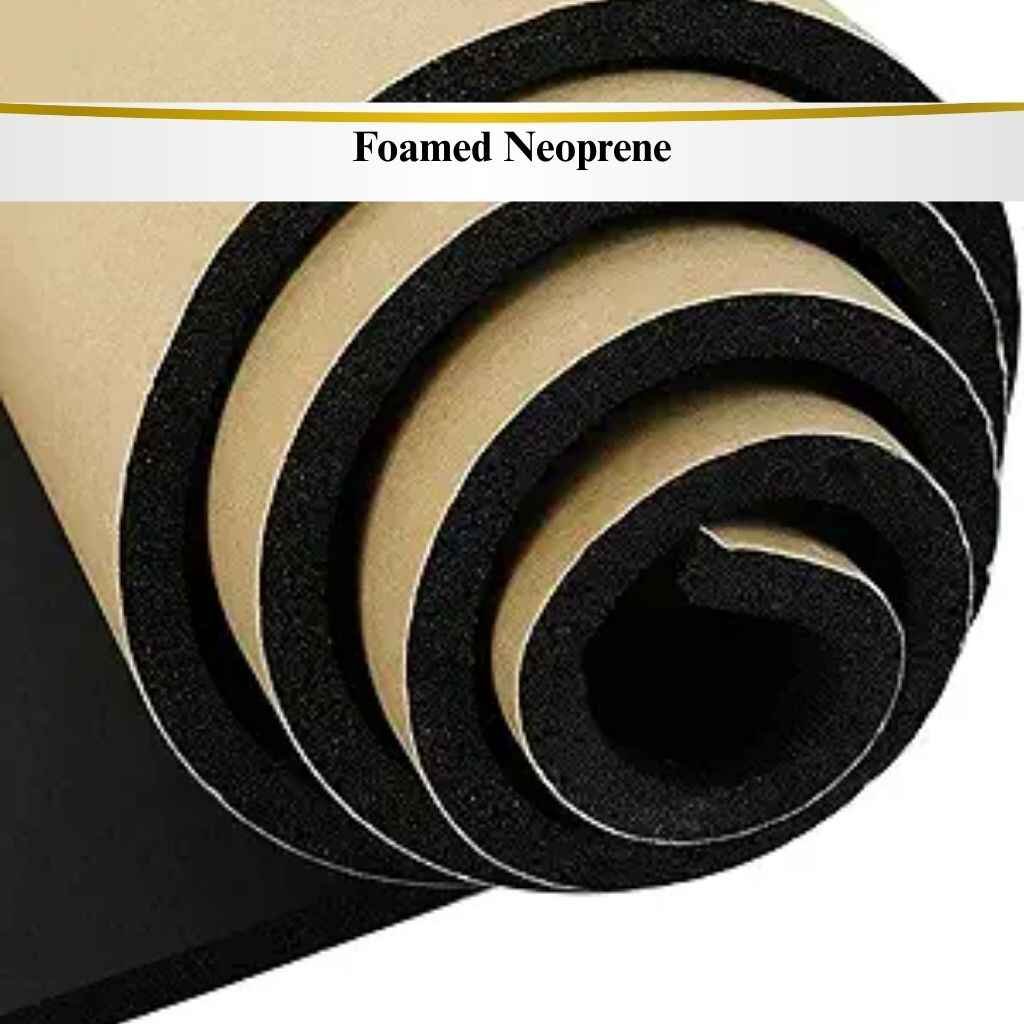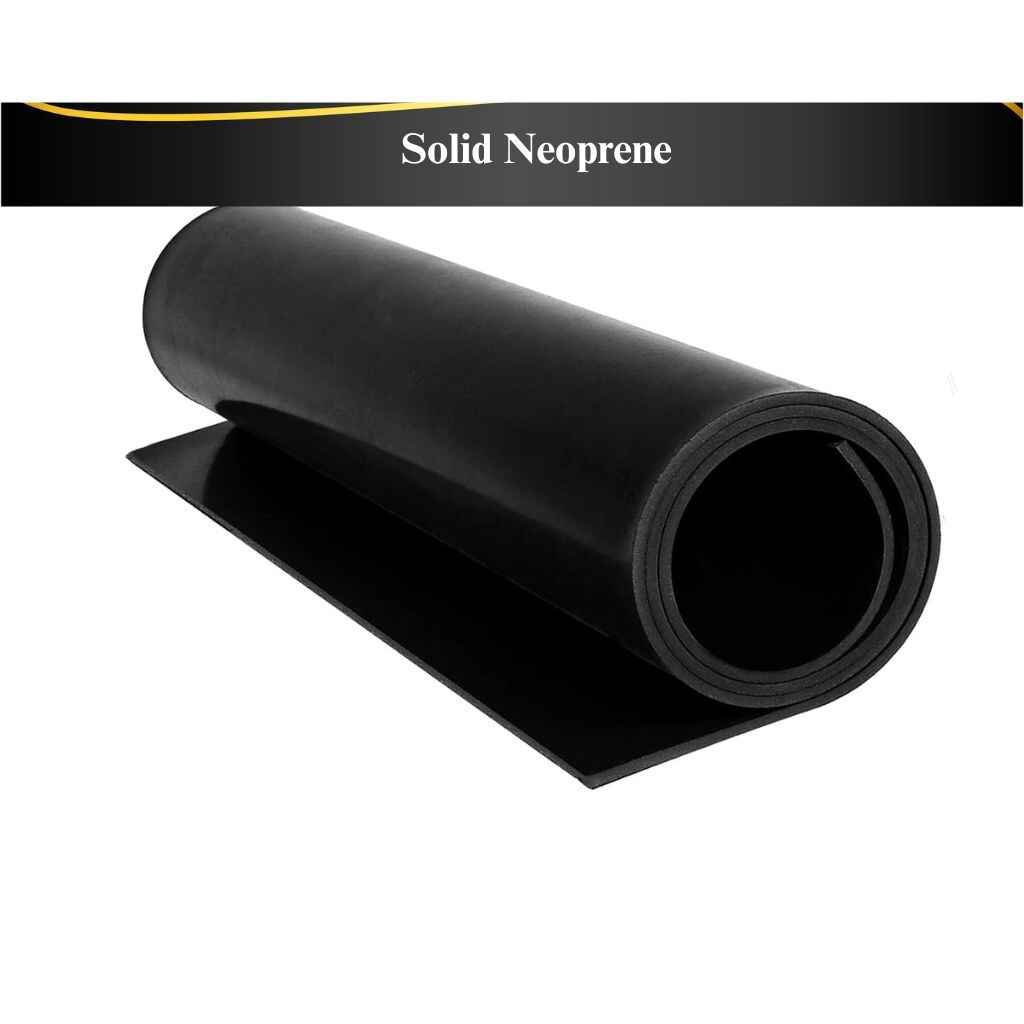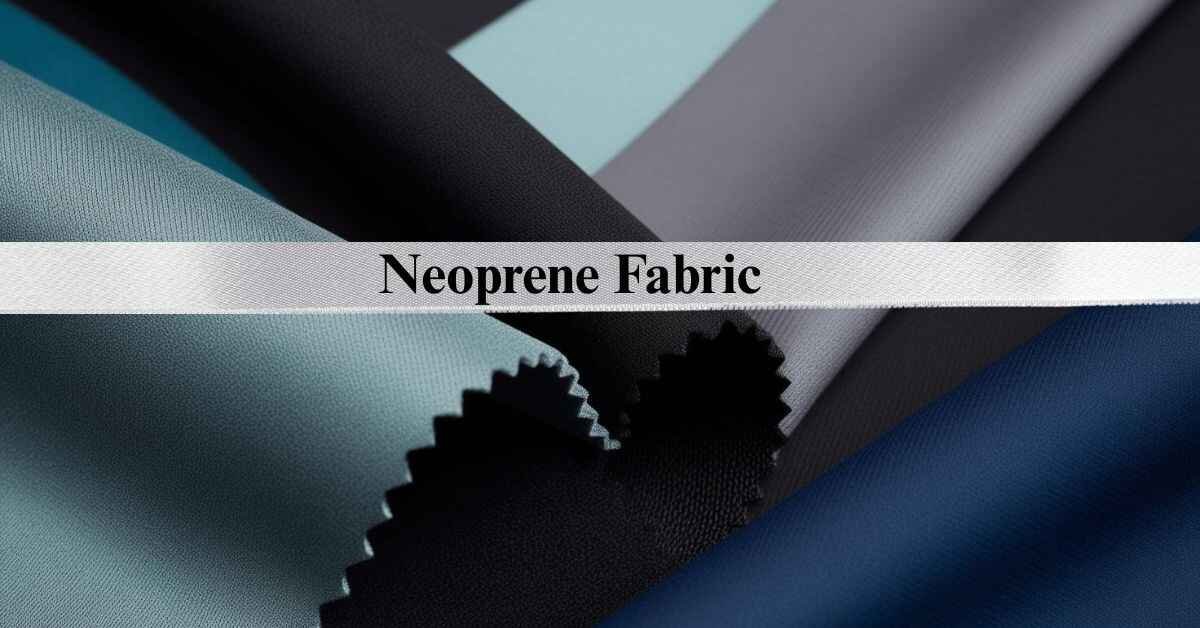Introduction to Neoprene
Neoprene is a type of synthetic rubber that has exceptional elasticity, insulation, resistance to water and oil, and even critical temperatures. It was created to serve as a better alternative to natural rubber, and because of this, it is now widely used in the fashion, sports, automotive, medical, and construction industries.
Neoprene serves a purpose in everyday items, from wetsuits to industrial seals to protective equipment, because of its remarkable versatility and strength.
History of Neoprene
In 1930, DuPont which operated as a prime American chemical company produced the very first neoprene material. Research teams at DuPont sought to discover a lab-made rubber substitute to replace expensive natural rubbers popular during that time.
The scientists led by Dr. Elmer K. Bolton achieved chloroprene rubber synthesis which later became known as Neoprene. It became a breakthrough manufacturing material because of its capability to resist chemicals along withstanding heat and weathering changes.
The military and industrial sector as well as protective equipment applications adopted neoprene extensively throughout World War II. The last few decades of technological innovation have improved its qualities so it serves contemporary manufacturing with greater economic value.
Composition of Neoprene
Neoprene is created out of polymerized chloroprene molecules which form a durable, elastic, and chemically stable material. This synthetic rubber has atoms of carbon, chlorine, and hydrogen, which account for its strength, flexibility, and resistance to the environment.
Depending on the formulation, neoprene can have added fillers, plasticizers, or stabilizers to enhance its durability, flexibility, or flame resistance.
Types of Neoprene
Neoprene can be further divided into different categories based on uses.
Closed-Cell Neoprene
The fabrication process of closed-cell neoprene consists of adding gas bubbles into the material while polymerization occurs. This process creates tiny locked air pockets within the material. The structure offers superb insulation, water resistance, and buoyancy. It is common in wetsuits, thermals, and other marine gear where waterproofing is crucial.

Open-Cell Neoprene
In contrast to the closed-cell structure of neoprene, open-celled neoprene has a porous and softer texture due to the flexible foam being highly adjustable to surfaces. The manufacturing process for open-celled neoprene involves air expansion which aids in giving it a plush and flexible feel. As a result, open-celled neoprene finds frequent applications in medical braces, sports padding, and high-performance wetsuits owing to its excellent comfort and fit.

Foamed Neoprene
The process of creating foamed neoprene begins with the addition of chemical foaming agents that instigate the material’s expansion and the formation of air pockets. The result is a light, flexible shock absorbing foam with much greater cushioning and flexibility than its parent material. Its forgiving nature makes it perfect for protective wear, padding, and other advanced impact-resistant uses like soundproof gloves and knee pads.

Solid Neoprene
Using compression molding and vulcanization gives us solid neoprene, which is a non-porous and compact material boasting high tensile strength and durability. Heavy-duty industrial applications such as automotive seals and conveyor belt gaskets as well as those necessitating mechanical strength utilize this type.

Properties of Neoprene
Neoprene is widely used due to its unique physical and chemical properties, including:
- Water Resistance: Since water does not penetrate it, this makes it ideal for marine and outdoor uses.
- Durability: It shows strong resistance to harsh physical and environmental conditions.
- Thermal Insulation: It allows for excellent heat retention which is critical in wetsuits and weatherproof garments.
- Chemical Resistance – It doesn’t get damaged by oils, solvents, and chemicals, ensuring its long service life in industrial applications.
- Elasticity & Flexibility – It does not lose its shape when stretched, hence, is suitable for sportswear, medical braces, and even automotive seals.
Uses of Neoprene
Fashion & Sports
Used in wetsuits, gloves, athletic braces, and footwear for flexibility and protection.
Common in fashionable jackets, dresses, and accessories due to its stretchability and insulation.
Medical Applications
Found in knee braces, orthopedic supports, and compression sleeves for joint and muscle protection.
Used in hospital mattresses and bandages due to its hypoallergenic nature.
Military & Tactical Gear
Used in protective suits, gloves, and gas masks for chemical and heat resistance.
Integrated into tactical boots and bulletproof vests for durability and flexibility.
Automotive & Industrial Use
Essential in seals, gaskets, and hoses due to its resistance to heat, oil, and chemicals.
Used in vibration-damping materials, belts, and tubing.
Construction & Insulation
Applied in soundproofing materials, roofing sheets, and weatherproof coating.
Used for thermal insulation in buildings and industrial machinery.
How Neoprene Is Made?
1. Raw Material Preparation
Chloroprene , which is butadiene and chlorine derivatives, serves as the key fundamental element for neoprene. It has to undergo a purification process before the polymerization step so that the impurities can be eliminated.
2. Polymerization of Chloroprene
Chloroprene molecules undergo emulsion polymerization in which emulsifying agents and catalysts induce a chemical reaction. This process connects the molecules into chains which gives polychloroprene, the precursor of neoprene.
3. Coagulation and Washing
Coagulation of the liquid polychloroprene occurs from the separation of solid rubber particles out of the liquid components. The solid polychloroprene is washed to get rid of residual chemicals and make it more pure.
4. Drying and Milling
After washing, the polychloroprene is dried in heated chambers where it transforms into dry rubber sheets or chips. The dry forms are milled with stabilizers, pigments, and plasticizers which improve the flexibility, color, and strength of the product.
5. Compounding and Formulation
Based on the prespecified purpose of the neoprene, manufacturers add extra components to the milled neoprene. This step brings decisions regarding the neoprene’s hardness, density, and resistance to chemicals, heat, and even UV radiation.
6. Sheet Formation or Molding
Depending on its final application, neoprene is either:
- Rolled into sheets (for wetsuits, gaskets, and industrial uses).
- Molded into solid shapes (for seals, hoses, and padding).
7. Vulcanization (Curing Process)
The neoprene sheets or cast parts undergo vulcanization, a process where heat and pressure are applied to strengthen the rubber structure. This additional treatment enhances its elasticity, thermal endurance, and toughness.
8. Cutting and Shaping
After curing, manufacturers cut and mold neoprene into its final form. They mechanically saw it into specific thicknesses to serve the automotive, fashion, medical, and construction industries.
9. Quality Control and Testing
Before distribution, neoprene is meticulously checked to ensure that it meets a certain industry standard. It is checked for:
- Resistance to water, oil, and other chemicals
- Its tensile strength and elasticity
- Its thermal as well as flame resistance
Once approved, neoprene is put into packages and shipped out for multiple applications.

Advantages and Disadvantages of Neoprene
Advantages
- High water, heat, and chemical resistance
- Durable and long-lasting
- Flexible and impact-resistant
- Excellent thermal insulation
Disadvantages
- Non-biodegradable, contributing to environmental concerns
- Can be expensive compared to natural rubber
- Not as breathable as some natural textiles
Neoprene vs. Other Materials
Comparison with Natural Rubber
Generally, natural rubber has more elasticity and is biodegradable while neoprene has superior resistance to chemicals and the weather.
Neoprene is more durable in extreme environments, however, natural rubber is more environmentally sustainable.
Comparison with Other Synthetic Rubbers
| Material | Key Features | Common Uses |
| Neoprene | Water, heat, and chemical resistant | Wetsuits, automotive, medical |
| Silicone | High-temperature tolerance | Kitchenware, medical implants |
| EPDM | UV and ozone resistant | Roofing, electrical insulation |
| Nitrile Rubber | Oil and fuel resistant | Gloves, fuel hoses, seals |
Environmental Impact
Neoprene comes from petroleum-based raw materials, making it an environmental concern since it is also non-biodegradable. Moreover, its manufacturing process emits chemicals, and improper disposal can cause air and water pollution.
Its waste disposal is difficult because it does not naturally decompose which results in landfills filled with neoprene waste. Some manufacturers are now starting to integrate recycling processes and cleaner production techniques like the use of limestone-neoprene which is less petroleum dependent.
With the advancement of organic, eco-friendly substitutes such as plant-sourced synthetic rubbers and biodegradable plastics, the positive impact that neoprene has on the environment is likely to improve over time.
Care and Maintenance Tips
Appropriate upkeep assists in prolonging the life span of neoprene goods. Take note of these maintenance suggestions:
- Rinsing After Use: Whatever the case may be, after using neoprene in saltwater or chlorinated water, it is imperative to rinse the product with fresh water to avoid the breakdown of the material.
- Use Of Soft Soap: Do not use strong detergents; instead, wash with soft soap and cold water in order to keep the goods’ elasticity.
- Avoid Prolonged Sun Exposure: Storing this synthetic material away from sunlight is crucial because UV rays over time lead to its degradation which eventually results in hardening and cracking.
- Air Dry Properly: To prevent shrinking make sure you lay it down or hang it away from heat sources like radiators.
- Do Not Fold for Long Periods: Storing neoprene rolled or flat will cause permanent creases and overall damage.
- Conditioning Sprays: To keep the material soft and supple, use conditioners or protectants.
Conclusion-
Due to its flexibility and insulating features, Neoprene is a material that is immensely used across industries and considered durable. It is used in fashion, sports, medical, and industrial sectors. It also balances the requirements of performance and environmental responsibility. With all the advancements and changes that sustainable alternatives bring forth, how do you make use of neoprene daily?
Read More<<Is Neoprene waterproof?
FAQs
Is neoprene waterproof?
Yes, neoprene is highly water-resistant, making it ideal for wetsuits, rainwear, and marine applications.
Can neoprene be recycled?
Traditional neoprene is difficult to recycle, but eco-friendly alternatives are emerging.
Is neoprene safe for sensitive skin?
Yes, hypoallergenic neoprene is safe, but some people may experience minor irritation. If you have sensitive skin, look for chlorine-free or latex-free neoprene to reduce the risk of allergic reactions.

[…] What is Neoprene? A Deep Dive into Its Features and Applications […]
[…] care of neoprene keeps it in good shape longer. After using it, rinse with clean water. This is important if it touched saltwater or chlorine. These can weaken neoprene over time. Use […]
[…] water resistive quality of neoprene is dependent on its formulation and method of manufacture. Various types provide varying degrees of […]
Wow, I had no idea Neoprene had such a fascinating
history and versatile range of applications! 🌟 I’m curious, how do
its insulating properties compare to other
synthetic fabrics in real-world uses? Can’t wait to learn more about how it’s shaping
the future of functional design!
Thank you so much! I’m glad you enjoyed learning about Neoprene. Great question—its insulating properties are actually one of its standout features, especially compared to many other synthetic fabrics. It’s widely used in wetsuits for that very reason. I’ll definitely consider diving deeper into that in a future post. Appreciate your curiosity and support!
Awesome article!
I really enjoyed the manner you covered this topic.
It’s so good to find valuable information like this on the web.
Thanks for sharing.
Looking forward to reading more!